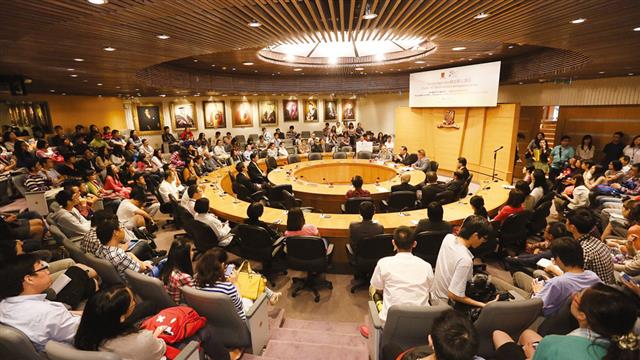Prof. Zhong Nanshan's talk 'From SARS to H7N9—Management of Acute Respiratory Virus Infection in China' was held at Cho Yiu Hall as one of CUHK 50th Anniversary Distinguished Lectures. He recalled that at the beginning of the SARS epidemic, a coronavirus had already been identified as the culprit by a military medical institute. But it was not made known to the public. Ten years later, progress had been phenomenal, both in terms of the sharing of research findings and alertness to emerging strains. The few cases of the latest avian flu infections had very soon attracted the attention of medical practitioners, and no time was wasted in investigation and identifying the culprit as H7N9. Moreover, mandatory reporting has ensured that new and suspected cases would be studied together by the experts. 'Early diagnosis, early quarantine, and early treatment' that he advocated have become the golden rule of combating respiratory diseases.
Professor Zhong pointed out that traces of genetic matter from chickens and ducks from Zhejiang and Korea are found in the H7N9 virus. In 70 per cent of the confirmed cases, patients were infected at the fowl markets or through direct contact with fowls. But a few cases suggested that the infection might have come from human beings. Chinese researchers experimented with ferrets and found that the virus could be airborne. He warned about the possible spread of H7N9 in the winter months ahead. He also worried about the air quality: 'I fear PM2.5 (suspended particles known as fine particulate matter) the most because these could be the vector for the virus or other dangerous substances. They would wreak havoc once they reach the pulmonary alveoli.'




